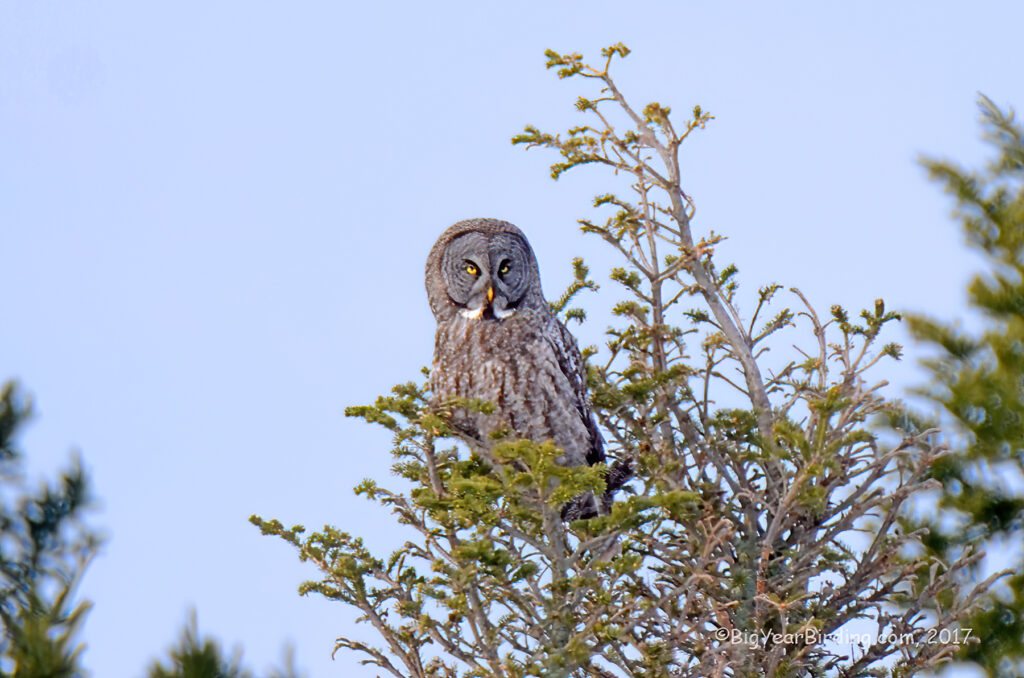
The Great Gray Owl (Strix nebulosa) is one of the largest owls in the world, with a length of up to 33 inches (84 cm) and a wingspan of up to 60 inches (152 cm). They have a distinctive gray facial disc, yellow eyes, and no ear tufts. Their feathers are a mix of gray, brown, and white, with dark spots and stripes. The tail is long and has broad bars. Their large size and distinctive features make them easy to identify in the wild.

Great Gray Owls are non-migratory birds and can be found year-round in their preferred habitats, which include boreal forests, taiga, and subalpine meadows in North America and Eurasia. They are primarily nocturnal hunters and feed on small mammals like voles, mice, and rabbits. Their large size allows them to hunt larger prey as well, such as hares and grouse.
One of the most distinctive features of the Great Gray Owl is their asymmetrical ear openings. This adaptation helps them locate prey in complete darkness by hearing the sound of their prey’s movement. Their sense of hearing is so acute that they can locate prey under deep snow.
In addition to their remarkable hearing, Great Gray Owls are also skilled hunters due to their silent flight. Their feathers have a soft fringe that muffles the sound of their wings, allowing them to fly almost silently through the air. This makes it easier for them to catch prey that would otherwise be alerted to their presence.

While Great Gray Owls are not currently considered threatened or endangered, their population is closely monitored due to their reliance on old-growth forests and the loss of this habitat to logging and development. Conservation efforts focus on preserving and restoring suitable habitats and educating the public about the importance of these magnificent birds.

